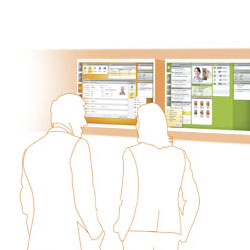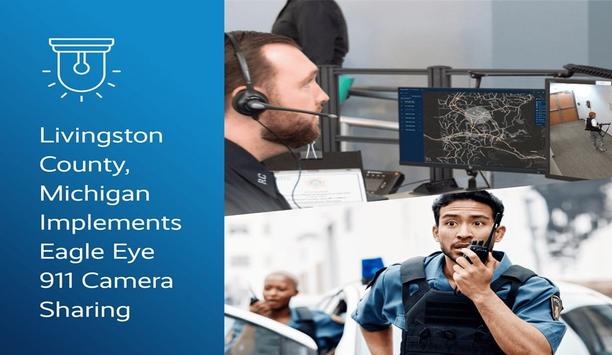 |
The usability revolution that took place several years ago on the consumer market is breaking into the field of security management. Wouter Kersteman, Interaction Designer at Nedap, explains in this article that intuitive user interfaces with attractive apps and widgets - similar to those found on modern mobile phones and tablets - are the standard of the future; usability is the latest buzzword and may even be a pre-requisite for security management systems.
Receptionists who use smartphones in their spare time can hardly be expected to use a 1990s-style security management system at work. Their motivation to learn how a system works and to use it consistently depends on whether that system meets them halfway. Put differently, a system that demands far too much knowledge will not be accepted by the 'smartphone generation.'
Simplifying security management systems
Traditional mobile phones either lacked functionalities such as access to the Internet and use of social media or were cumbersome to use. This resulted in the successful evolution of the smartphone that greatly simplified the use of its various features and functionalities. Likewise, the modern security management system needs to evolve` in the same way as, for example, the mobile phone, where all functionalities need to be easily accessible, while the graphic user interface needs to be simplified drastically. Of course, making a user-friendly security management system is a huge challenge, since there are a lot of functionalities involved.
Customising security management systems for different roles/ user personas
An interface that helps prevent human error contributes to a higher degree of security in an organisation |
Different types of employees such as the receptionist, the security guard, the security manager and the system administrator use a security management system. Each of these four personas should have role-specific widgets with which to manage their daily tasks. Users see only those widgets that provide the functionalities relevant to their role. The great thing about widgets is that they can be used not only on a monitor, but also on a tablet or smartphone. This means that a security guard can take a tablet along while doing rounds, to see what needs to be done at a particular door.
This simplification is a sharp turnabout from the trend towards increasing complexity that had dominated security management systems for a long time. Developers were primarily focused on expanding their system's performance. The race to collect more and more data for security purposes was very impressive, but what was forgotten was the fact that people's ability to absorb all that information did not keep pace with the system's capacity. Some processes became so slow and inefficient that users sometimes just skipped them, which obviously compromises security.
Using Interaction Design
 |
| To improve usability of systems, widgets can be used to allow each person to view only items needed for their role |
Ultimately, there is an enormous challenge to reshape a security management system in such a way that users only get to see the screens and functionalities that are needed to performing their tasks and responsibilities. Naturally, the user interface needs to be intuitive. This challenge could be tackled from the discipline of Interaction Design. In Interaction Design, the focus is exclusively on the graphical user interface, the crucial locus where the user interacts with the system. The user becomes the focal point more than the technique; hence, the considerable emphasis on function, behaviour and final design of products and systems. Interaction Designers cooperate closely with application engineers to link what the user wants to the technical capabilities of the system.
Relying on usability reviews
Interaction designers make frequent use of test users to steer their development. In an early stage they ask test users to try the new interface while their reactions to the system are monitored. Users are filmed and asked to talk about what they are doing. The designers monitor not only the number of mouse clicks needed to perform a particular task, but also the emotions the user experienced while interacting with the application. This feedback makes it possible to fine-tune the interface and to make small but important changes to everything users see, hear and feel. The tweaking process at the heart of Interaction Design results in a security system so intuitive and user-friendly that users can start using it with hardly any instruction. In practice, however, that’s rarely the case.
Usability equals security
A usability-based security management system can be learned easily and this reduces the need for training, saving an organisation time and implementation costs. Work itself gets done more efficiently when employees are using such an intuitive system, which in turn means the organisation can provide service with a higher degree of professionalism. Most importantly, enhanced usability reduces mistakes and increases security. If a user likes working with a system, he won’t be tempted to skip procedures that are too complicated or tasks that take too long. And an interface that helps prevent human error contributes to a higher degree of security in your organisation.
 | Wouter Kersteman |



















